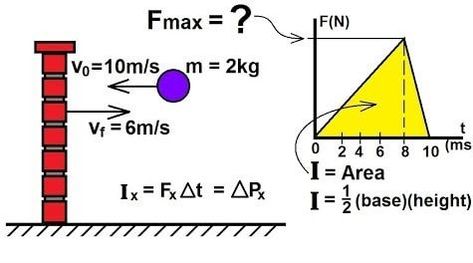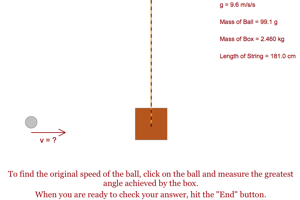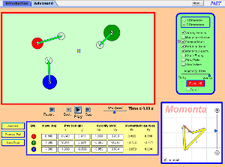Bermuda Motorcross Racing (Photo: Takara Dill)
|
Home >> AP Physics I >> Linear Momentum
|
Linear momentum is the product of the mass and the velocity of an object. Its usefulness lies in the fact that it is conserved during collisions and explosions. Thus the direction and speed of objects before and after collision/explosion events can be determined – which is sort of useful for NASA, pool players and particle physicists!
6.1 - Linear Momentum and Impulse
|
The momentum of a moving object is simply the product of its mass and its velocity. It is a vector quantity. Its usefulness lies in the fact that it is conserved during a collision (or explosion). It is a more complete description of the property of a moving object as the mass is included. So far we have assumed that Newton's Laws are for objects that have a constant mass, but mass can and does change.
Newton's First Law in momentum terms is that if there is no net external force then the momentum of a system will not change.
Newton's Second Law states that the force required to change the velocity of an object is the product of its mass x acceleration. The underlying assumption is that the mass is constant and only the velocity changes. A more correct version is that the force required is equal to the rate of change of momentum:
\[F=\frac{\Delta p}{t}\]
If this is rearranged to put the change of momentum on one side, we are left with the product of force x time. This is called the IMPULSE of the force. It is numerically equal to the change of momentum. If the force varies as a function of time, the impulse is equal to the area under the F-t graph.
Note that the momentum is a vector quantity. If the direction changes, the momentum changes as well. The most common example of that is when a ball bounces off a wall. Let's say that a ball of mass 2.0 kg hits a wall at 10.0 m/s and rebounds at 6.0 m/s. The impulse and change of momentum is:
Newton's First Law in momentum terms is that if there is no net external force then the momentum of a system will not change.
Newton's Second Law states that the force required to change the velocity of an object is the product of its mass x acceleration. The underlying assumption is that the mass is constant and only the velocity changes. A more correct version is that the force required is equal to the rate of change of momentum:
\[F=\frac{\Delta p}{t}\]
If this is rearranged to put the change of momentum on one side, we are left with the product of force x time. This is called the IMPULSE of the force. It is numerically equal to the change of momentum. If the force varies as a function of time, the impulse is equal to the area under the F-t graph.
Note that the momentum is a vector quantity. If the direction changes, the momentum changes as well. The most common example of that is when a ball bounces off a wall. Let's say that a ball of mass 2.0 kg hits a wall at 10.0 m/s and rebounds at 6.0 m/s. The impulse and change of momentum is:
|
\[Ft=\Delta p= 2\,\text{kg}\times \left ( 10 \,space\text{m/s} - -6\text{m/s}\right ) = 32 \text{kgm/s}\]
Notice that in this example, this impulse is also equal to the area shaded in yellow as the force is not constant with time. If we could measure the maximum force of the impact we could determine how long it took and vice versa. |
6.2 - Conservation of Momentum
|
In any closed system, if there is no external force acting on it, the overall momentum is conserved. This is a direct consequence of Netwon's First Law of Motion. I will discuss what a closed system is later - it is a key concept at AP. Generally the law of conservation of momentum is used for collisions and explosions. Drawing a pair of well-labelled diagrams to show the 'before' and 'after' situation of the event is extremely useful and is actively encouraged.
Collisions
There are a couple of common situations: an object runs into another head on a collide or it bounces off. Note the before and after on all of the diagrams!
Collisions
There are a couple of common situations: an object runs into another head on a collide or it bounces off. Note the before and after on all of the diagrams!
|
|
The overall momentum before the collision is the sum of the two momenta, with the 2 kg cart being negative as it is moving to the left.
\[p_{before}= p_{1}+p_{2}= \left ( 4\times 15 \right )+\left ( 2\times -3 \right )=54\; \text{kgm/s}\] Therefore, the total momentum of the coupled carts after must also equal 56 kgm/s. \[p_{after}= 54 \; \text{kgm/s}= (6\; \text{kg}\times v)\] \[v = \frac{54}{6}=9 \; \text{m/s}\] |
6.3 - Inelastic and Elastic Collisions
|
6.4 - Two-dimensional Collisions
|
Other Resources
PhET SImulation: Collision Lab



